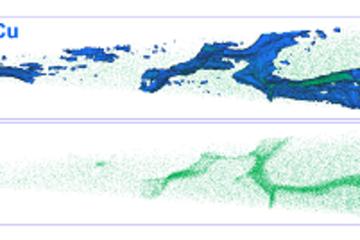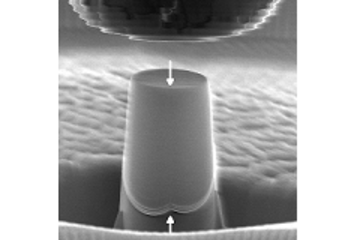All genres
1241.
Talk
Thermo mechanically coupled simulation of high manganese TRIP/TWIP steel. 27th International Workshop on Computational Materials
Modeling, IWCMM 27
, Leuven, Belgium (2017)
1242.
Talk
Influence of microstructure of Ag16.7Sb30Te53.3 bulk thermoelectric on their performance. 13th Multinational Congress on Microscopy, Rovinj, Croatia (2017)
1243.
Talk
Ab-initio investigation of the role of kappa carbide in upgrading Fe–Mn–Al–C alloy to the class of advanced high-strength steels. ArcelorMittal Global R&D Gent, Thessaloniki, Greece (2017)
1244.
Talk
Recent Developments in the Analysis of Microstructures by 3D-EBSD. 12th European Congress for Stereology and Image Analysis, Kaiserslautern, Germany (2017)
1245.
Talk
In-process precipitation strengthening during Laser Metal Deposition of Aluminum alloys by Al3(Sc,Zr) nano-precipitates. EUROMAT 2017 Conference, Thessaloniki, Greece (2017)
1246.
Talk
In-process precipitation strengthening in Al–Sc during Laser Metal Deposition by exploiting the Intrinsic Heat Treatment. Alloys for Additive Manufacturing Symposium, Zürich, Switzerland (2017)
1247.
Talk
An integrated crystal plasticity and phase field model to simulate twinning behavior in magnesium. Euromat 2017, Thessaloniki, Greece (2017)
1248.
Talk
1 Billion Tons of Nanostructure - Metastability Alloy Design and Segregation Engineering. 38th Risø Intern. Symp. Materials Science Advanced Metallic Materials by Microstructural Design , Roskilde, Denmark (2017)
1249.
Talk
Getting insights to Alzheimer‘s disease by atom probe tomography. 6th International caesar conference, Overcoming Barriers — atomic-resolution and beyond: advances in molecular electron microscopy, Bonn, Germany (2017)
1250.
Talk
Correlative transmission EBSD-APT analysis of grain boundaries in CIGS and CZTS based thin-film solar cells. Euromat, Thessaloniki, Greece (2017)
1251.
Talk
ICME study of particle damage behaviour in Fe–TiB2 metal matrix composites. EUROMAT Conference 2017 , Thessaloniki, Greece (2017)
1252.
Talk
From ab-initio to macro: microchemistry dependent flow stress modeling based on first principle calculations. International Conference on Computational Plasticity (COMPLAS), Barcelona, Spain (2017)
1253.
Talk
Recent Developments in the Analysis of Microstructures by 3D-EBSD. Symposium: 3D materials characterization at all length scales and its applications to iron and steel, Düsseldorf, Germany (2017)
1254.
Talk
Strain Partitioning in Metallic Microstructures: The Importance of Considering the 3D Morphology. BSSM's 12th International Conference on Advances in Experimental Mechanics, University of Sheffield, Sheffield, UK (2017)
1255.
Talk
DAMASK - Düsseldorf Advanced Material Simulation Kit. 7th MaDIS open seminar, National Institute for Materials Science, Tsukuba, Japan (2017)
1256.
Talk
In-process Precipitation During Laser Additive Manufacturing Investigated by Atom Probe Tomography. Microscopy & Microanalysis, St. Louis, MO, USA (2017)
1257.
Talk
On the Multiple Event Detection in Atom Probe Tomography. Microscopy & Microanalysis 2017 Conference, St. Louis, MO, USA (2017)
1258.
Talk
Metastability Alloy Design. 16th Intern. Conference on Rapidly Quenched and Metastable Materials (RQ16), Leoben, Austria (2017)
1259.
Talk
Correlative transmission EBSD-APT analysis of grain boundaries in Cu(In,Ga)Se2 and Cu2ZnSnSe4 based thin-film solar cells. Microscopy & Microanalysis, St. Louis, Missouri, USA (2017)
1260.
Talk
Designing novel high-entropy alloys towards superior properties. Frontiers in Materials Processing Applications, Research and Technology (FiMPART'2017), Bordeaux, France (2017)











